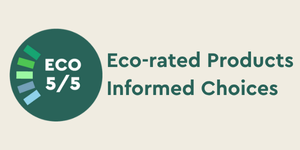No7 Recyclable - the everything else category
“THE EVERYTHING ELSE” CATEGORY.
 The next time you use a plastic product, flip it over and check the bottom. If you see #7 in the center of a three-arrowed triangle, you have no way of knowing for certain whether its recyclable or non-recyclable (even plastics industry people and recyclers can’t tell sometimes).
The next time you use a plastic product, flip it over and check the bottom. If you see #7 in the center of a three-arrowed triangle, you have no way of knowing for certain whether its recyclable or non-recyclable (even plastics industry people and recyclers can’t tell sometimes).
#7 is the “other” put-everything-else-that-is-not-#1-6 category. It includes both non-recyclable and “biodegradable” plastics.Tweet this Polylactic acid (PLA), for example, is a #7 plastic. It is made from plant-starch instead of petroleum, and therefore, marketed as “biodegradable.” (For your reference, most synthetic plastics come from crude oil.)
I use quotations here because it’s important to know that current biodegradable products can only decompose if they are sent to a special factory, where the temperature and humidity is specially controlled, and lumped together with other compostable plastics. (If those plastics are thrown into landfill and mixed in with other trash, it doesn’t matter if they’re compostable or not. They’re not going back into nature if they’re stuck in between layers of other waste.)
Another example of a #7 plastic is melamine, a non-recyclable plastic used often in food containers like bowls. Its claim to fame: its durability and being dish-washer safe. In Taiwan, melamine can be spotted in night markets (beware pink bowls the next time you want to try some pork over rice 滷肉飯 (lu rou fan)). According to Dasdy Lin, you can’t recycle melamine because it is a thermoset plastic: “it won’t melt again- the only way is to incinerate it.”
https://blog.nationalgeographic.org/2018/04/04/7-things-you-didnt-know-about-plastic-and-recycling/
Posted: Thursday 19 December 2019

